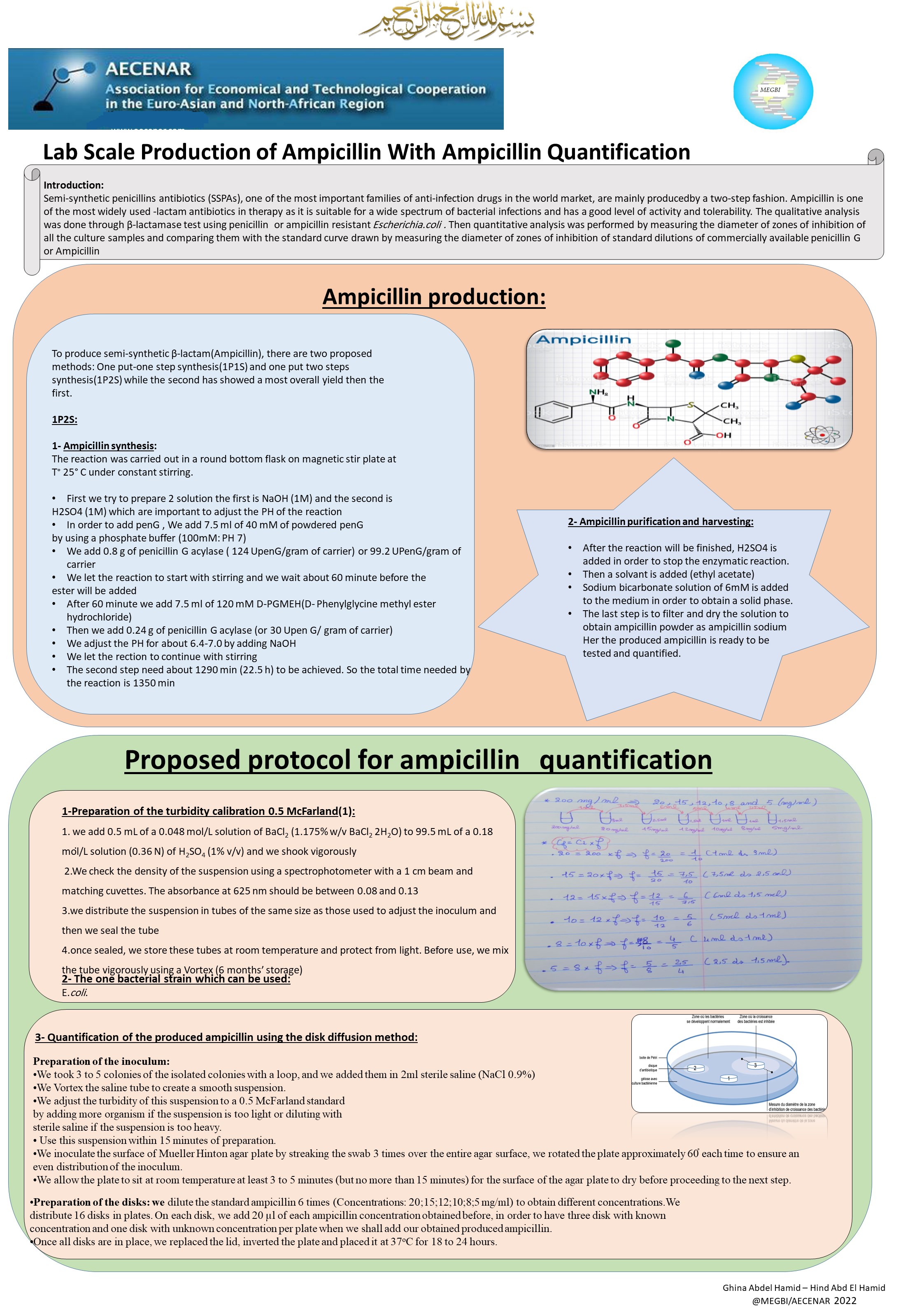- Hits: 3218
Lab Scale Ampicillin production
Ampicillin crystallisation
11-17November 2022
After 22.5 h of agitation of the mix ,the reaction is stopped by adding few drops of H2SO4 and the PH is adjusted to 2, here the ampicillin is presented ionised in the solution.
The mix is then filtrated using filter paper , 10 mL of butyl acetate is added as solvent to 20 mL filtrate, the organic phase is taken after decantation and the PH is adjusted to 4 by adding NaOH then (2% W/V) NaHCO3 is added . Ampicillin crystals are formed.
The mix is cooled down at 40 and then filtrated so ampicillin sodium salt are obtained.
After crystallisation the crystals are dissloved in 2 ml phosphate buffer , filtrated and then quantified by using microbiological essay as mentioned previously.
Then the results are mentioned:
7-11-2022
First trial of ampicillin crystallization:
same steps are applicated to produce ampicillin
Here two method of the crystallization can be applicated. The first one is mentioned below:
Ampicillin purification and harvesting:
- Add few drops of H2SO4 to stop the enzymatic reaction
- Filtrate the mix using a funnel fitted with filter paper
(Take 1ml of the filtrate for the bacterial sensibility test later)
- Add butyl acetate solvent (1Vsolvant/2Vfiltrate)
- Let rest for 2 minutes, then the organic phase is removed and the aqueous phase is discarded after decantation
(Take 1ml from each phase to test the presence of ampicillin later)
{We will carry out a qualitative, non-quantitative antibiogram, just to see the appearance or not of an inhibition zone following the application of: filtrate, the organic phase and the aqueous phase, stored in the eppendorfs tubes (as already explained) on petri dishes containing Muller-Hinton medium. So, we are going to test the effectiveness of the antibiotic on the bacteria.}
- Add 2% phosphate buffer (V/V) to the organic solution
- Adjust the PH to 7.5 by adding NaOH
- Crystallization:
- Add 2% (W/V) NaHCO3 to the aqueous phase medium
- Cool them at 4oC for about 7 days
- Filtrate them to harvest ampicillin sodium salt
then after 10 days we observed the formation of thin crystals which must be tested based on the sensitivity of E.coli against ampicillin.
28-10-2022_Ampicillin synthesis corrective protocol
Proposed protocol for ampicillin production.docx
Proposed protocol for ampicillin quantification.docx
Rapport de stage Alaa BZAL Ampicilline production.docx (Last update: 26.07.22)
